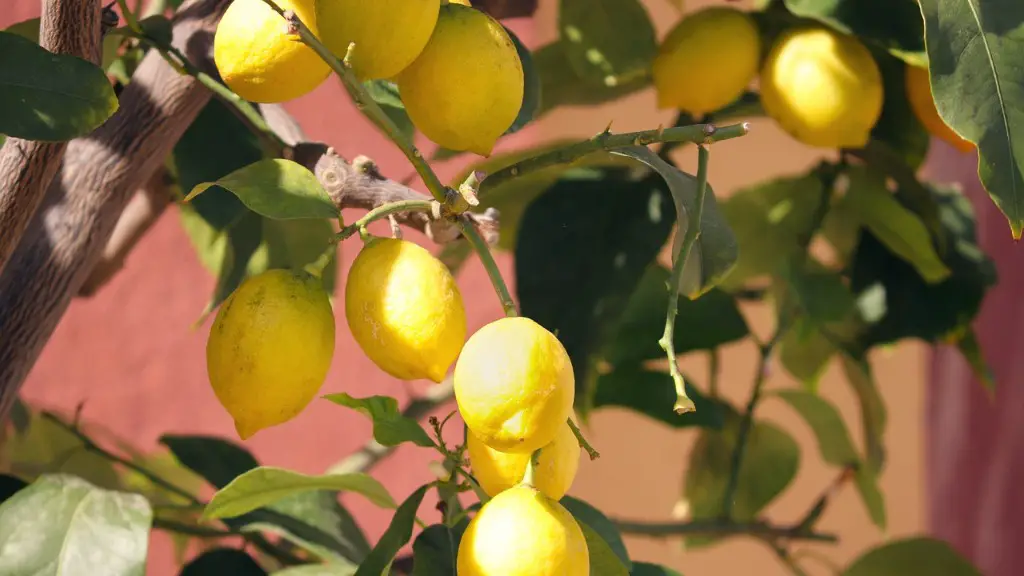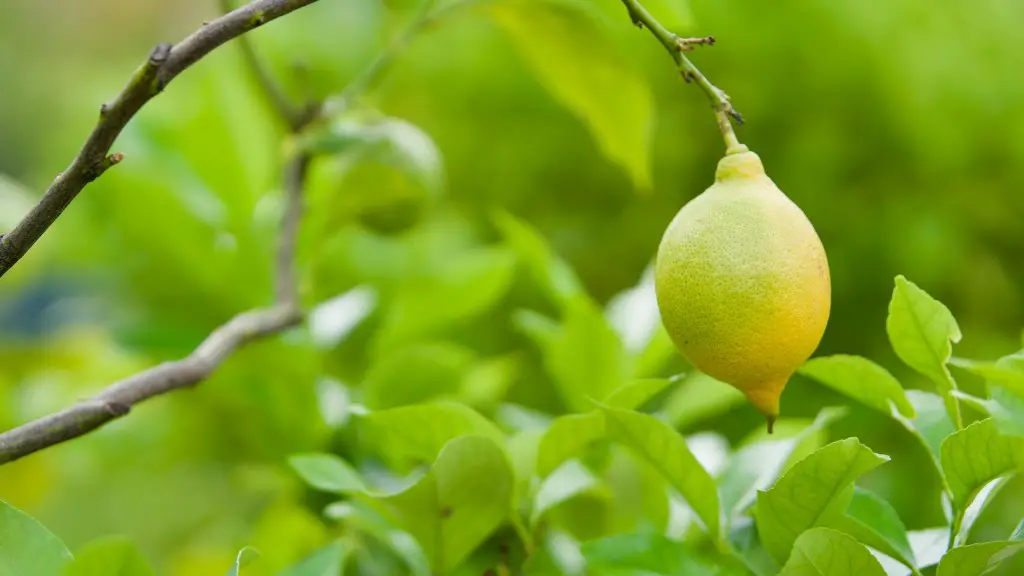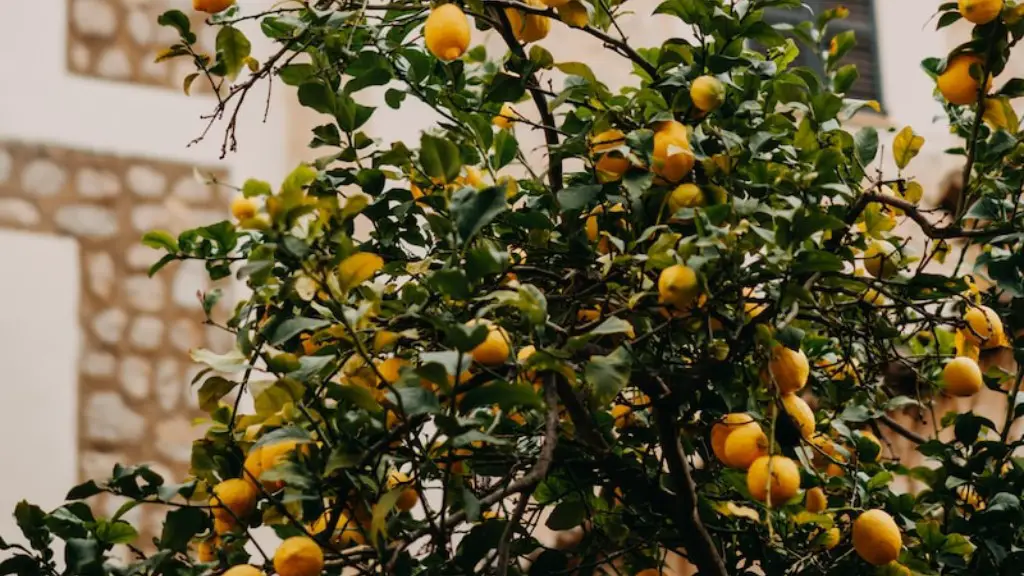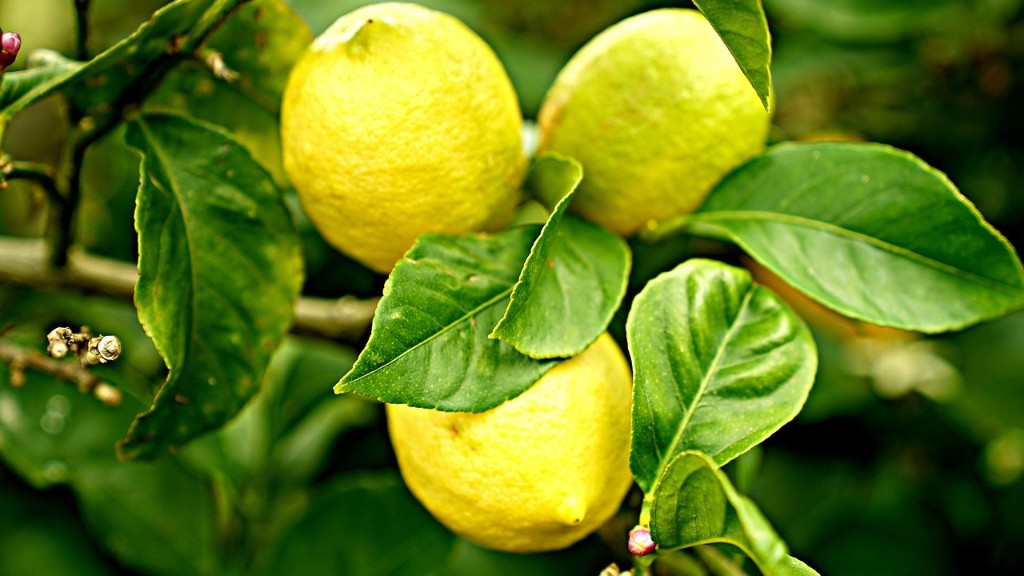Lemons are a fruit tree that can grow quite large, often reaching up to 25-30 feet in height. They’re a popular choice for landscaping as they are relatively low maintenance and tend to be quite resilient against many pests and diseases. The size of a lemon tree will vary depending on soil fertility, environmental conditions, and most importantly, the variety of the tree itself. Some varieties can reach up to 40 feet, while other varieties stay much smaller, typically reaching no more than 10 feet in size.
When planting a lemon tree, it’s important to take into consideration both the variety of the tree, as well as the soil fertility, climate, and space you have to work with. If you have the space and environment to accommodate a larger variety of lemon tree, you may be able to create a larger and healthier harvest. A larger variety of lemon tree may therefore be the best choice for homeowners looking to establish a larger citrus orchard.
In order to keep a lemon tree healthy and productive, it’s important to provide it with adequate amounts of sunlight, water, and nutrient-rich soil. Lemon trees generally prefer full-sun exposure and require watering on a consistent basis. Depending on the variety, lemon trees may need to be fertilized every two to four months during the growing season. When choosing a fertilizer for your lemon tree, look for a natural or organic product that is specifically formulated for citrus trees.
For those with limited space, there are dwarf (or smaller) varieties of lemon trees available. These trees are ideal for growing in containers and can be moved indoors during winter months. Dwarf varieties usually only reach a maximum height of around 8-10 feet and are more adaptable to diverse conditions. Despite their size, dwarf lemon trees can still produce an abundant harvest of fruit given proper care.
The size of a lemon tree also plays a role in determining the size and quality of the fruit it will eventually produce.Larger trees tend to produce larger fruits with more juice and a more intense flavor. Dwarf varieties may produce smaller fruits, but are still packed with nutrition and flavor. Overall, choosing the proper variety and following proper care instructions will be the best way to ensure a strong, healthy, and productive lemon tree for years to come.
Location
When considering where to locate your lemon tree, it’s important to consider the amount of sunlight and water the tree will receive. Establishing the tree in a spot where it will get ample sunlight is key, as lemon trees need a minimum of 6-8 hours of direct sun exposure each day in order to thrive. Especially during the spring and summer months when the tree is in active growth, more sun will be beneficial. It’s also important to position the tree away from any harsh winds such as those coming off of a body of water.
Adequate irrigation is also key for lemon trees. It’s important to watering regularly, during both the growing season and the fall and winter months. A good rule of thumb is to check the soil moisture every two to three days; if the top few inches of soil are dry to the touch, it’s time to water. A regular irrigation system can also be very useful in helping to ensure even and sufficient watering.
When selecting a spot to position your tree, it’s good to pick one that is relatively level and free of sudden slopes or other drainage issues which can impact the moisture levels in the soil. It’s also important to select a spot that has good air circulation; positioning the tree too close to other trees or buildings can lead to air stagnation and fungal disease.
Though lemon trees prefer warm and humid climates, they are surprisingly resilient and can withstand some chilly temperatures. In areas where temperatures drop below freezing, it is important to protect the tree from frost. Covering the tree with burlap or floating row covers can help to minimize damage to the tree from sudden icy temperatures.
Pruning
Pruning your lemon tree will help to keep it in shape, healthy, and productive. After three to four years, pruning should be done in order to reduce the size of the tree and keep it at a manageable height. When pruning, it’s important to remove mostly vertical stems, leaving behind the horizontal branches that tend to produce the most fruit. Pruning should be done during the dormant season, when the tree is not actively growing.
Removing damaged, cracked, or dead branches as they appear is also important in order to reduce the spread of disease. Additionally, trimming away any branches that are growing in an unusual direction can help to give the tree an aesthetically pleasing form. When pruning, take care to cut just above the node (where the leaves emerge from the branch) in order to avoid leaving behind stumps, which can harm the tree.
In terms of tools, it’s important to have sharp and properly sanitized pruning tools. Cleaning or replacing pruning tools in-between uses can help to prevent the spread of infection. It’s also important to wear protective gear such as long clothing and safety glasses when performing any pruning activity.
Overall, pruning should be done with care and following a basic set of guidelines. It’s important to never prune more than a third of the branches off the tree, as overpruning can lead to reduced fruit production, weak stems, and disease susceptibility. Pruning your lemon tree correctly and periodically can help to ensure a long, healthy, and productive life span.
Fertilization
Fertilizing your lemon tree is an important part of its overall health and production. In order to encourage growth, control pests and diseases, and achieve a bumper crop of lemons, it’s important to fertilize your tree regularly. Depending on the soil fertility and the variety of your lemon tree, the frequency of fertilization may need to be increased or decreased.
When selecting a fertilizer, it is important to choose one specifically made for citrus trees. Citrus fertilizers typically contain a balance of essential nutrients such as nitrogen, phosphorus, and potassium, as well as essential micronutrients such as magnesium, iron, and zinc. Look for a formulation that contains trace elements as well.
In terms of application, it’s best to administer the fertilizer in the late winter or early spring when the tree is in active growth. It is recommended to spread the fertilizer evenly around the tree, at a distance of about 10-12 inches from the trunk. Avoid saturating the soil, as this can actually be detrimental to the tree. Instead, spread a thin layer and lightly water it in after application.
Keep in mind that over-fertilizing can damage the tree. If the soil is already nutrient rich and/or the tree is producing an abundance of fruit, skip the fertilizer and simply give the tree a dose of compost or organic matter. Finally, it’s important to monitor the growth of your tree and adjust the frequency of fertilization as needed.
Pests and Diseases
In terms of pests and diseases, lemon trees can be relatively resilient and are typically able to withstand mild to moderate infestations. To protect the tree from any potential pests or diseases, it’s important to ensure it is being properly watered, fertilized, and pruned in order to keep it healthy, strong, and resistant to harm.
For fruit, flower, and branch specific issues, it’s important to properly identify the pest or disease in order to properly treat it. Citrus trees can be affected by a variety of pests and diseases such as citrus canker, citrus thrips, and various citrus pests, to name a few. Once the source of the issue is identified, treatment can begin. Common treatments involve using organic or chemical solutions (in extreme cases), or simply removing the affected leaves or branches.
If necessary, selecting pest and disease resistant varieties of lemon trees can also help to keep infestations at bay. Research local varieties that are known to do well in your area and opt for those if possible. Finally, it’s important to check and inspect your tree on a regular basis in order to catch any potential problems early. This will help to limit the potential damage as well as limit the need for any chemical treatments.
Harvesting Lemons
Harvesting lemons is a rewarding experience when the tree is properly cared for throughout the year. Though the exact time of harvest will depend on the variety of the tree, lemons are usually ready to pick when the fruits turn a yellowish-green color. Lemons can be harvested by hand or with a tool such as a reacher.
When approaching the tree to collect the lemons, it’s important to use caution to avoid damaging any stems or branches. Try to position yourself so as to avoid placing any weight on any part of the tree, including the branches. Carefully lift the fruits from the tree and gently place them in a container or basket.
Rest assured, however, that it’s perfectly fine to leave some fruits on the tree. Leave some of the larger, less ripe lemons for later harvest. Lemons should be harvested with about a week to 10 days before you plan on using them, as this will allow for a bit of ripening before consumption or storage. Keep in mind that it’s important to collect only ripe fruits from the tree, as this preserves the tree’s energy and resources.



